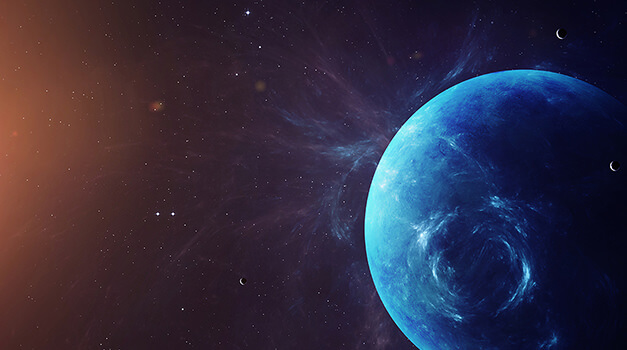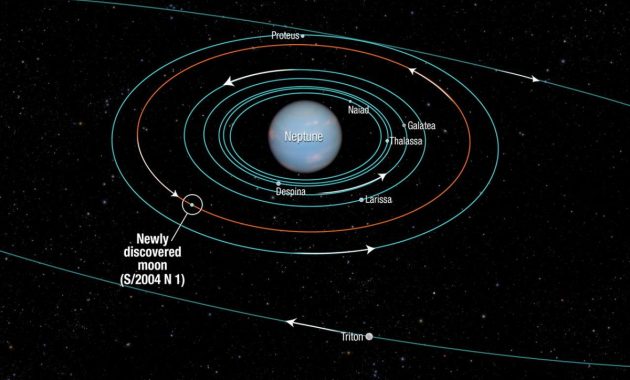Neptune has 14 known moons, which are named for minor water deities in Greek mythology. By far the largest of them is Triton, discovered by William Lassell on October 10, 1846, 17 days after the discovery of Neptune itself; over a century passed before the discovery of the second natural satellite, Nereid. Neptune’s outermost moon Neso, which has an orbital period of about 26 Julian years, orbits further from its planet than any other moon in the Solar System.
Triton and Nereide were the only ones known until 1989. Triton is the most curious of the Neptune satellites. It is the only one among the big satellites of the solar system that revolves around Neptune in the opposite direction to that of the rotation of the planet (retrograde movement).
With a diameter of 2705 km, Triton is also one of the few satellites still active with Io, one of Jupiter’s satellites. Its temperature on the ground is the coldest of the solar system: -235° C! An immense polar cap covers its south pole with methane and frozen nitrogen. It extends almost to the equator, between -90 ° and -15 ° of latitude!
The mass distribution of the Neptunian moons is the most lopsided of the satellite systems of the giant planets in the Solar System. One moon, Triton, makes up nearly all of the mass of the system, with all other moons together comprising only one third of one percent. This is similar to the moon system of Saturn, where Titan makes up more than 95% of the total mass, but is different from the more balanced systems of Jupiter and Uranus. The reason for the lopsidedness of the present Neptunian system is that Triton was captured well after the formation of Neptune’s original satellite system, much of which would have been destroyed in the process of capture.


Hh
link
.
pol